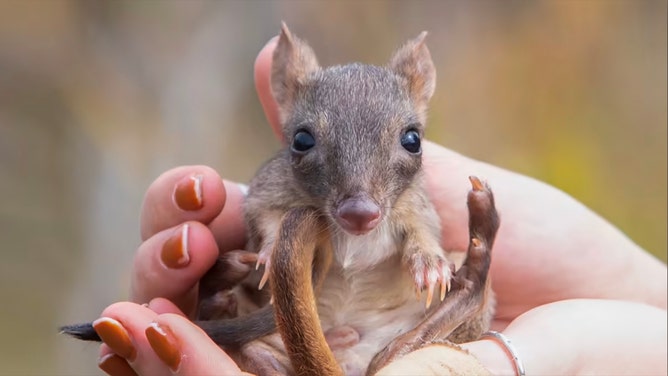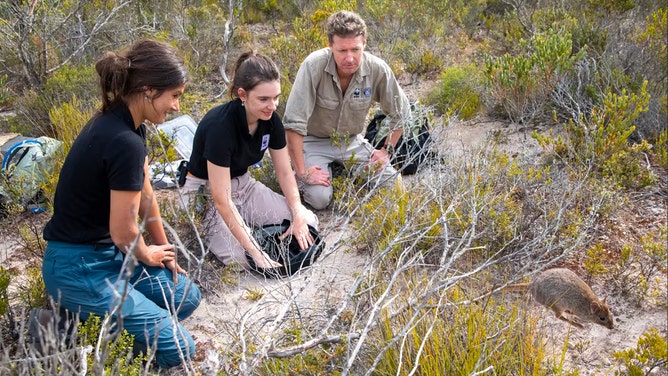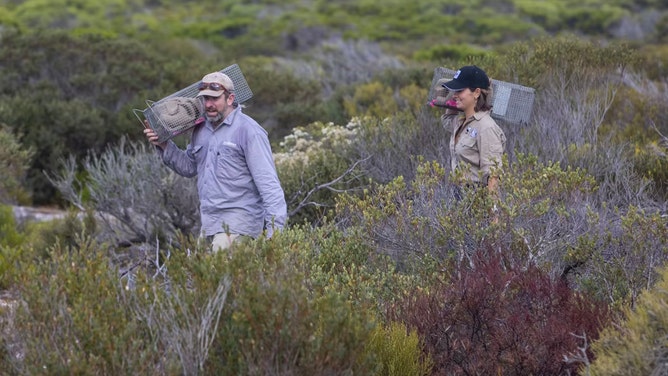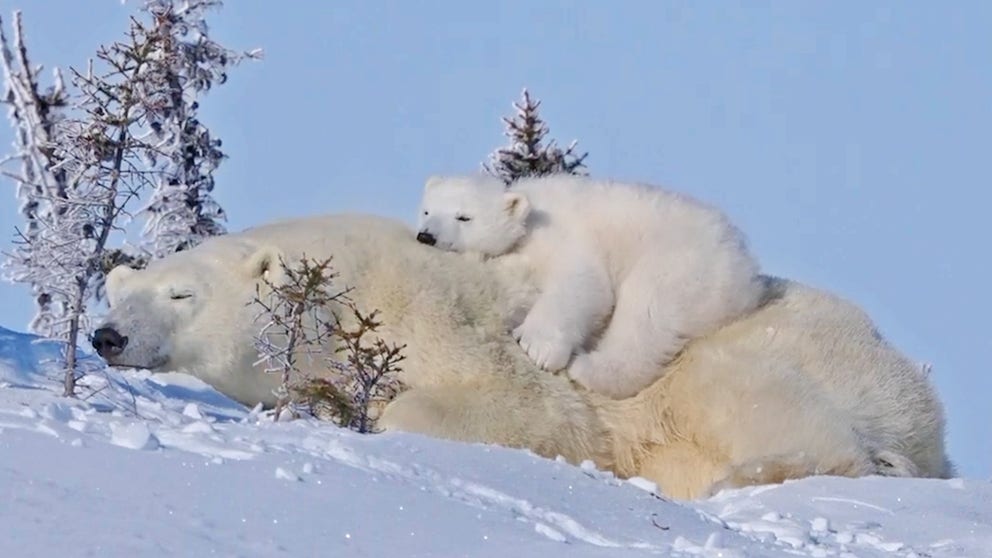Rare Australian marsupial bouncing back after more than century-long absence
After new monitoring, the World Wildlife Fund in Australia said the population of brush-tailed bettongs continues to grow in Dhilba Guuranda-Innes National Park after it was reintroduced to the South Australian mainland.
Best animal mom moments caught on camera
Moms across the animal kingdom show the special bond between mother and child in these heartwarming moments caught on camera.
INNESTON, South Australia – After more than a century, one of Australia’s rarest marsupials is returning to life.
New monitoring from the World Wildlife Fund in Australia showed the population of brush-tailed bettongs continues to grow in Dhilba Guuranda-Innes National Park after it was reintroduced to the South Australian mainland.
CAN YOU NAME THE 7 WONDERS OF THE NATURAL WORLD?

A juvenile yalgi (bettong) born on Yorke Peninsula, Australia.
(WWF-Aus / think Mammoth)
The critically endangered species, also known as yalgi, once inhabited more than 60% of mainland Australia, the conservation organization said. They disappeared from the Yorke Peninsula due to habitat loss and the spread of introduced predators, including foxes and feral cats.
Wildlife officials said it's a promising sign for Marna Banggara, formerly known as the Southern Ark project in the Yorke Peninsula. It’s the biggest restoration project in Australia to bring lost native wildlife to the area.
8-YEAR-OLD'S LUCKY MESSAGE IN A BOTTLE FOUND 10 YEARS LATER AT AUSTRALIAN BEACH

Researchers release a bettong during recent monitoring.
(WWF-Aus / think Mammoth)
The WWF Australia reported that nearly every female bettong of the 85 captured was carrying pouch young. In addition, researchers said that almost half of them caught were born on the Yorke Peninsula.
"It’s fantastic to see so many new animals in the population," said Derek Sandow, a Northern and Yorke Landscape Board ecologist.
Sandow said the new monitoring shows that the bettongs they released in 2021 and 2022 are comfortable in the landscape.
"They’re finding food, they’re finding shelter, and they’re finding mates," he added.
AUSTRALIAN MAN STRIKES GOLD, LANDS RARE NUGGET WORTH $160K

Carrying traps to monitor brush-tailed bettongs in Dhilba Guuranda-Innes National Park.
(WWF-Aus / think Mammoth)
Researchers also caught bettongs from Wedge Island and Western Australia in the same areas, which is a good indicator that the two groups are mingling and breeding, and that’s great for the genetic health of the population, according to Sandow.
Chloe Frick, a PhD candidate at the University of Adelaide, has been monitoring the bettong reintroduction. She examined a juvenile male - known as a young-at-foot – who was a couple of months old and almost ready to venture out on his own. His mother was also born on the Yorke Peninsula.
"It’s wonderful to see these Yorke Peninsula-born bettongs are surviving the juvenile stage and now having pouch young of their own," she said.
MESMERIZING VIDEO SHOWS VIBRANT AURORA DANCING ABOVE BIOLUMINESCENT WATER IN AUSTRALIA
The recent monitoring is the best indication yet that the species might be able to be successfully reintroduced when there is suitable habitat and ongoing feral predator control, according to WWF-Australia’s Rewilding Project Manager Rob Brewster.
"If this population can be sustained over time," he said. "It would be the first successful reintroduction of this species beyond islands and fenced safe havens."



